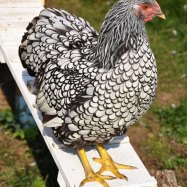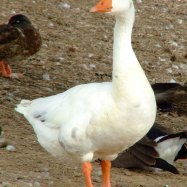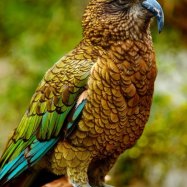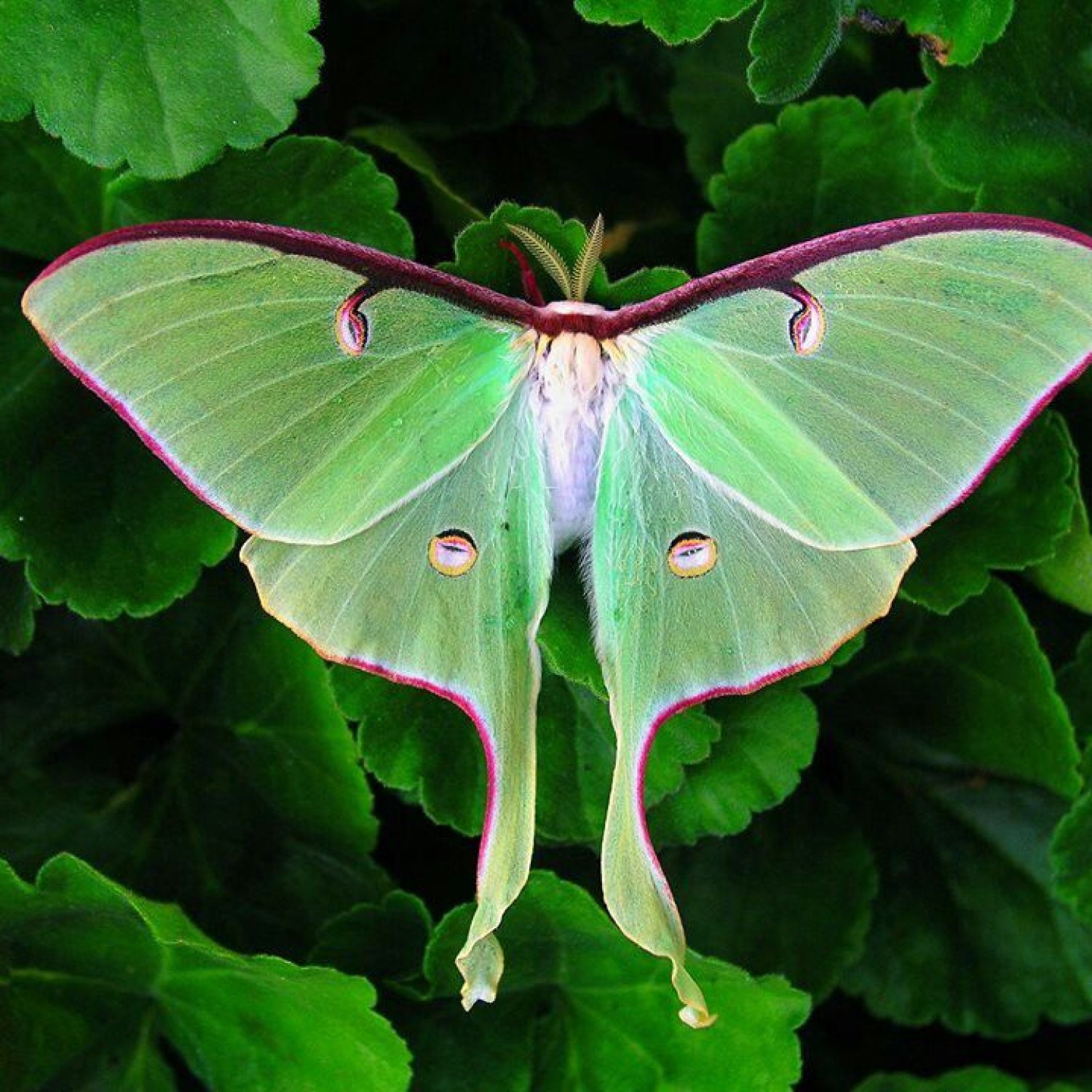
Moth
Moths vary greatly in size, ranging from only a few millimeters to over 30 centimeters in wingspan
Moths are a diverse group of insects found all over the world. Ranging in size from a few millimeters to over 30 centimeters, they have a slender body, covered in scales, with two pairs of wings and six legs. Their family includes various species with unique body shapes. Explore the fascinating world of moths and discover their beauty and diversity!
Animal Details Summary:
Common Name: Moth
Kingdom: Animalia
Habitat: Various habitats including forests, fields, gardens, and urban areas
The Fascinating World of Moths: A Closer Look at These Mysterious Insects
Moths may seem like unassuming creatures, often overshadowed by their more glamorous butterfly cousins. Yet, these insects have their own unique characteristics and play an important role in the natural world. From their wide distribution to their diverse feeding habits and stunning colors, there is much more to moths than meets the eye. In this article, we will take a closer look at these fascinating creatures and explore the many unique features that make them so interesting Moth.A Brief Introduction to the World of Moths
Moths belong to the scientific order Lepidoptera, which also includes butterflies. They are classified under the kingdom Animalia, phylum Arthropoda, and class Insecta. With over 160,000 known species, moths are one of the most diverse groups of insects. They are found all over the world, except in extreme cold regions like Antarctica, making them a globally distributed species.One of the most distinctive features of moths is their wings. Most moths have two pairs of wings, with a wingspan ranging from a few millimeters to over 30 centimeters. These wings are covered in microscopic scales, giving them a powdery appearance. The scales also serve important functions like regulating body temperature, assisting in flight, and providing protection from predators.
Moths: The Hidden Gems of the Insect World
When we think of moths, the first image that comes to mind might be a dull brown insect that flies around porch lights on a summer night Moon Jellyfish. However, moths are far more diverse and colorful than we give them credit for. In fact, moths exhibit a wide range of colors and patterns, often with cryptic camouflage to blend in with their surroundings.This diverse coloration is one of the key evolutionary adaptations of moths, allowing them to survive in a wide range of habitats and evade predators. Some moths have vibrant hues, such as the beautiful luna moth with its bright green wings and delicate patterns. Others, like the atlas moth, have subtle earthy tones that help them blend in with their surroundings. With so many different colors and patterns, moths are truly nature's hidden gems.
The Varied Habitat and Distribution of Moths
Moths can be found in a wide range of habitats, from forests and fields to urban environments and even deserts. This is because moths have adapted to thrive in various environments and have a diverse range of feeding habits. Most moths feed on nectar or plant sap, while some larvae are herbivores and feed on leaves or other plant materials. Others, like the unusual vampire moth, even feed on blood from larger animals.The geographic distribution of moths is equally diverse. These insects are found in every country in the world, with the exception of Antarctica. Their adaptability and resilience to harsh environments have allowed them to colonize even the most remote locations. This makes moths an integral part of the global ecosystem, playing a crucial role in pollination and as a food source for other animals.
The Marvels of Moth Migration
One of the most remarkable aspects of moth behavior is their migration patterns. While birds are commonly associated with long-distance migration, many moth species also undertake epic journeys. One such example is the North American black cutworm, which migrates from the southern United States to Canada every spring, covering a distance of over 400 kilometers.Moth migration is not only limited to long-distance journeys. In some parts of the world, moths have evolved to undergo seasonal migrations within a small area. For example, in the highlands of Brazil, moths migrate vertically up and down the mountainside depending on the season.
The Importance of Moths in Nature
As with any species, moths play a crucial role in maintaining the delicate balance of the natural world. As pollinators, they help in the reproduction of plants, making them an essential part of the ecosystem. Moths also serve as a vital food source for other animals, including birds, bats, and even some mammals.Furthermore, moths have unique relationships with plants, making them important contributors to the health of our environment. For example, some moths have co-evolved with specific plants to form a symbiotic relationship. The yucca moth, for instance, depends on the yucca plant for both food and a place to lay its eggs. In return, the moth pollinates the yucca, ensuring its survival.
The Threats Facing Moths and Their Conservation
Despite their important role in the ecosystem, moths are facing a range of threats, including habitat loss, climate change, and pesticide use. These factors have led to a decline in moth populations in many parts of the world, threatening the survival of certain species.To combat these threats and conserve moth diversity, conservation efforts are underway in many countries. These initiatives focus on preserving moth habitats, promoting sustainable farming practices, and raising awareness about the importance of moths in our environment.
Unlocking the Mysteries of Moths through NLP
As scientists continue to study moths and their behavior, they are also turning to cutting-edge technology like Natural Language Processing (NLP) to gain a deeper understanding of these insects. NLP involves using machine learning algorithms to analyze and extract insights from large volumes of text data. Scientists can use NLP to better understand the complex interactions between moths and their surroundings and discover new patterns and behaviors.With the help of NLP, researchers have been able to uncover previously unknown information about moth migration patterns, feeding habits, and evolutionary history. This approach offers a fascinating window into the world of moths and how they have adapted and evolved over millions of years.
Moths: A True Wonder of Nature
In conclusion, moths may be small and often overlooked, but they are a true wonder of nature. With their diverse colors, varied habitats, and important role in the ecosystem, these insects are far more complex and fascinating than meets the eye. By learning more about moths and their behavior, we can gain a deeper appreciation for these mysterious creatures and work towards their conservation and protection for future generations to enjoy. So next time you see a moth fluttering around a porch light, take a moment to appreciate the beauty and wonder of this incredible insect.

Moth
Animal Details Moth - Scientific Name: Lepidoptera
- Category: Animals M
- Scientific Name: Lepidoptera
- Common Name: Moth
- Kingdom: Animalia
- Phylum: Arthropoda
- Class: Insecta
- Order: Lepidoptera
- Family: Various
- Habitat: Various habitats including forests, fields, gardens, and urban areas
- Feeding Method: Most moths feed on nectar or plant sap, while some larvae are herbivores and feed on leaves or other plant materials
- Geographical Distribution: Moths are found all over the world, except in extreme cold regions like Antarctica
- Country of Origin: Various
- Location: Worldwide
- Animal Coloration: Moths exhibit a wide range of colors and patterns, often with cryptic camouflage to blend in with their surroundings
- Body Shape: Moths have a slender body, typically covered in scales, with two pairs of wings and six legs
- Length: Moths vary greatly in size, ranging from only a few millimeters to over 30 centimeters in wingspan
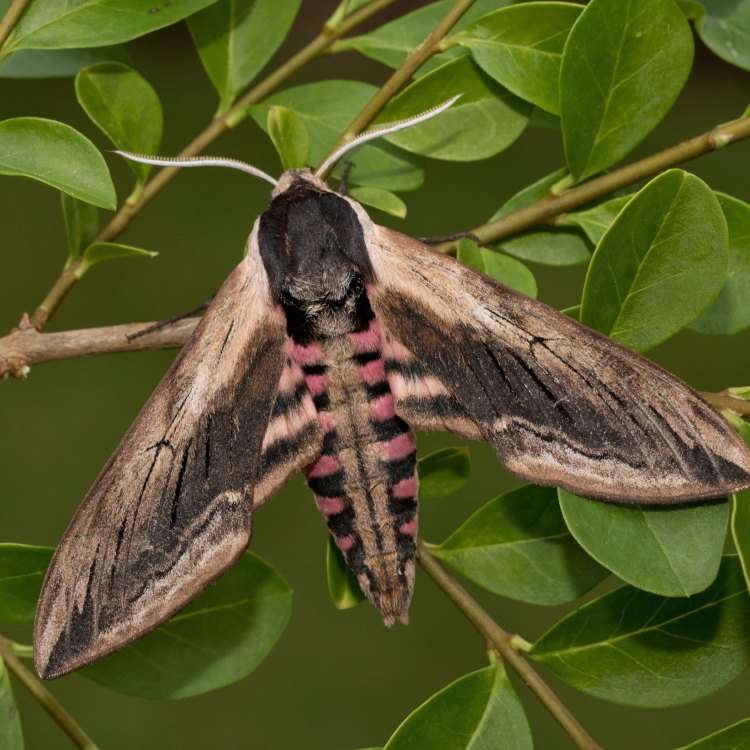
Moth
- Adult Size: The adult size of moths can range from very small to large, depending on the species
- Average Lifespan: The lifespan of moths varies greatly, with some species living only for a few days, while others can live up to several months
- Reproduction: Moths reproduce sexually, with females laying eggs on suitable host plants
- Reproductive Behavior: Moths use various reproductive behaviors such as pheromone release to attract mates
- Sound or Call: Some moths produce sounds or calls using vibrations of their wings or other body parts
- Migration Pattern: Some moth species undertake long-distance migrations, while others are sedentary
- Social Groups: Moths are generally solitary insects, but some species may have limited social interactions
- Behavior: Moths are mostly nocturnal and are attracted to light sources, although there are diurnal moth species as well
- Threats: Moths face various threats including habitat loss, climate change, pesticides, and predation
- Conservation Status: The conservation status of moths varies depending on the species, with some being endangered or vulnerable
- Impact on Ecosystem: Moths play important roles in ecosystems as pollinators and as a food source for other animals
- Human Use: Moths have cultural significance in many societies and are also economically important for products such as silk from silk moths
- Distinctive Features: Moths are distinguished by their scales-covered wings and antennae typically shaped like a feather
- Interesting Facts: Some interesting facts about moths include their ability to navigate using moonlight and their importance in the study of evolution and genetics
- Predator: Moth predators include birds, bats, spiders, and some reptiles and amphibians
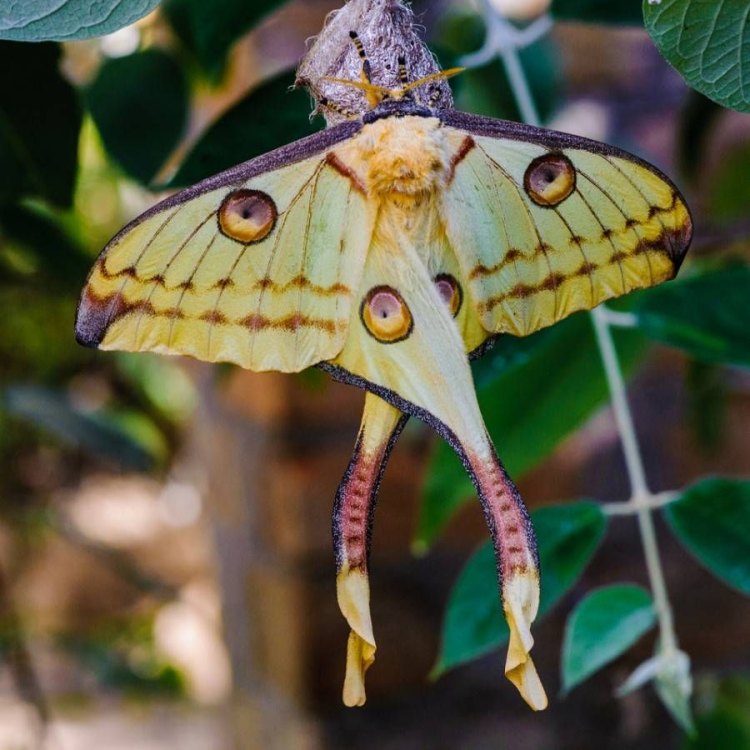
Lepidoptera
The Life and Wonders of Moths: From Tiny Insects to Fascinating Creatures
When we think of insects, we often picture them as small, pesky creatures that invade our homes. But there is one insect that stands out from the rest – the moth. These seemingly mundane insects have a surprisingly unique and fascinating life, filled with interesting behaviors, remarkable capabilities, and ecological importance.From their adult size to their average lifespan, reproduction, distinctive features, and impact on the ecosystem, there is so much to explore about moths PeaceOfAnimals.Com. So let’s delve into the world of moths and discover what makes them truly remarkable.
Adult Size: Small to Large
The first thing that comes to mind when we think of moths is their size – and rightfully so, as they come in a variety of sizes. While some species are astonishingly small, barely visible to the human eye, others can be quite large. In fact, the adult size of moths can range from just a few millimeters to several centimeters.
But what determines the size of a moth? The size of a moth is primarily dependent on its species. In general, smaller moth species tend to have a simpler life cycle, with fewer developmental stages, while larger moth species have longer and more complex life cycles, with multiple developmental stages.
Average Lifespan: Short or Long?
When it comes to their average lifespan, moths vary greatly. Some species live for just a few days, while others can survive for several months. This difference in lifespan is mainly due to their varying life cycles Maltipoo.
Moths undergo a process called metamorphosis, where they transform from eggs to caterpillars to pupae, and finally into adults. This transformation takes time and energy, and the longer the life cycle, the longer the moth will live.
Reproduction: Sexual Mating
One of the most intriguing aspects of moths is their reproductive behavior. Like most insects, moths reproduce sexually, with females laying eggs on suitable host plants. However, their unique mating rituals and behaviors set them apart from other insects.
Moths have evolved a variety of reproductive behaviors, including pheromone release. These chemical signals are released by females to attract males for mating. This behavior is so precise that male moths can detect pheromones of their own species from long distances.
Sound or Call: Wings That Sing
We usually associate sounds and calls with birds and other animals, but did you know that some moths can produce sounds as well? It is a common misconception that moths are silent creatures, but in reality, they can make sounds using vibrations of their wings or other body parts.
These sounds are mainly produced during mating rituals or to attract potential mates. Some moths even have specialized organs on their abdomen that create sounds, making them truly unique among insects.
Migration Pattern: Long-Distance Travelers or Homebodies?
Like many animals, some moth species undertake long-distance migrations for various reasons, such as seeking favorable breeding grounds or escaping unfavorable conditions. These migrations can span hundreds or even thousands of kilometers.
However, not all moth species are migratory, and some are more sedentary. Their migration patterns also differ depending on the species, with some undertaking regular migrations at specific times of the year, while others exhibit irregular and sporadic migrations.
Social Groups: Solitary Yet Connected to Others
Moths are mostly solitary insects, with limited social interactions with other individuals. However, this does not mean that they do not have any connections with members of their species.
During breeding seasons, some moth species may gather in large numbers to mate or to find suitable hosts for their eggs. This limited social interaction is essential for their survival and reproduction, but beyond that, moths are generally solitary creatures.
Behavior: Nocturnal and Drawn to Light
Moths are primarily known for their nocturnal behavior, which means they are active at night and sleep during the day. However, there are also diurnal moth species, active during the day.
One of the most well-known behaviors of moths is their attraction to light sources, often leading them to fly into our homes and swarm around bright lights. This behavior is still not fully understood, but research suggests that it might be a form of defense mechanism or a navigational error.
Threats: Facing Various Dangers
Like many other animals, moths also face numerous threats in their environment. One of the most significant threats facing moths is habitat loss, as the destruction of their natural habitats and food sources has a severe impact on their survival.
Climate change is another significant threat, as it can affect the availability of resources and disrupt their migratory patterns. Pesticides used in agriculture also pose a considerable risk to moths, as they can be exposed to lethal doses while foraging for food on treated plants. Additionally, they are also preyed upon by birds, bats, spiders, and some reptiles and amphibians.
Conservation Status: Endangered or Vulnerable?
The conservation status of moths varies greatly depending on the species. Some are considered endangered, with a high risk of extinction, while others are listed as vulnerable, meaning they are at risk of becoming endangered.
The IUCN Red List, which assesses the conservation status of species worldwide, has listed several moth species as either critically endangered, endangered, or vulnerable. These include the Splendid Ghost Moth, the Spider-tailed Horned Viper Moth, and the Geometric Stab Moth.
Impact on Ecosystem: Crucial Pollinators and Food Sources
Moths may seem insignificant to some, but they play crucial roles in ecosystems worldwide. As pollinators, they are responsible for the reproduction of many plant species, including some agricultural crops, making them vital for human sustenance.
They are also a vital food source for other animals, including birds, bats, and other insects. Without moths, many animals would go hungry, and the delicate balance of ecosystems would be disrupted.
Human Use: Silk and Cultural Significance
Aside from their ecological importance, moths also have human uses. Perhaps the most famous use of moths is in the production of silk, one of the oldest and most valuable textiles known to humans. Silk is produced by silkworm moths, the larvae of silk moths, and has been used for thousands of years for various applications, from clothing to art.
Moths also have cultural significance in many societies worldwide. In Japanese culture, moths are seen to represent good tidings and prosperity. In Chinese culture, moths are symbolic of longevity and happiness. In some African cultures, moths are believed to have supernatural powers, and are even kept as pets.
Distinctive Features: Scales and Feather-like Antennae
What sets moths apart from other insects are their distinctive features. Moths are easily recognized by their wings, which are covered in tiny, overlapping scales. These scales give moths their unique colors and patterns, making them one of the most visually stunning insects in the animal kingdom.
Another distinguishing feature of moths is their antennae. These sensory organs are usually shaped like a feather and play a crucial role in their navigation, finding mates, and detecting pheromones.
Interesting Facts: Moon Navigators and Evolutionary Hints
There are many interesting facts about moths that make them truly fascinating creatures. For instance, some moth species have the remarkable ability to navigate using moonlight. They use the moon to maintain a constant angle while flying, allowing them to move in a straight line and reach their destination.
Moths have also played a crucial role in the study of evolution and genetics. The similarities and differences between moth species have provided insights into the evolutionary history of insects, and their genetic makeup has been instrumental in studying gene expression and mutations.
Predators: Birds, Bats, and More
Despite their unique abilities and behaviors, moths are still preyed upon by various animals in their environment. Their most common predators include birds, bats, and spiders, but they are also at risk of being eaten by some reptiles and amphibians.
Their primary defense mechanisms against predators are their colors and patterns, which can serve as warning signals, camouflage, or mimicry. Some moth species also use chemical defenses, such as releasing a bad odor or secreting a toxic substance, to ward off attackers.
In Conclusion
From their varied sizes to their fascinating behaviors and ecological importance, moths are truly remarkable creatures. Despite their reputation as pests, these insects are integral to our ecosystems, and their survival and conservation should be a priority.
As we continue to learn more about moths, we can appreciate and admire these insects for their unique features and capabilities. So the next time you see a moth fluttering around a light source, take a moment to appreciate the wonders of these tiny creatures.
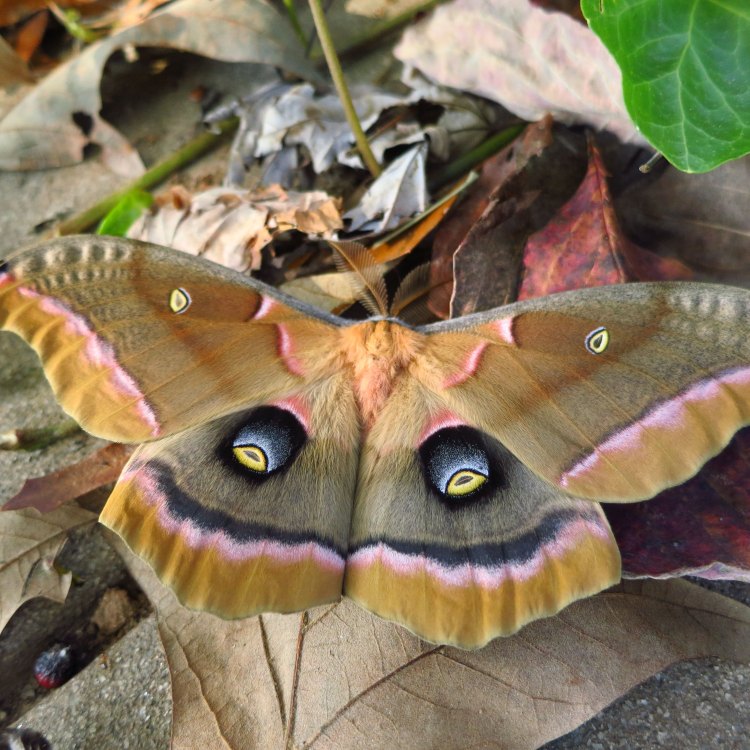
The Fascinating World of Moths: A Closer Look at These Mysterious Insects
Disclaimer: The content provided is for informational purposes only. We cannot guarantee the accuracy of the information on this page 100%. All information provided here may change without prior notice.




